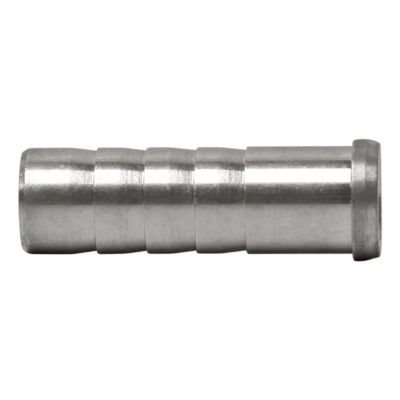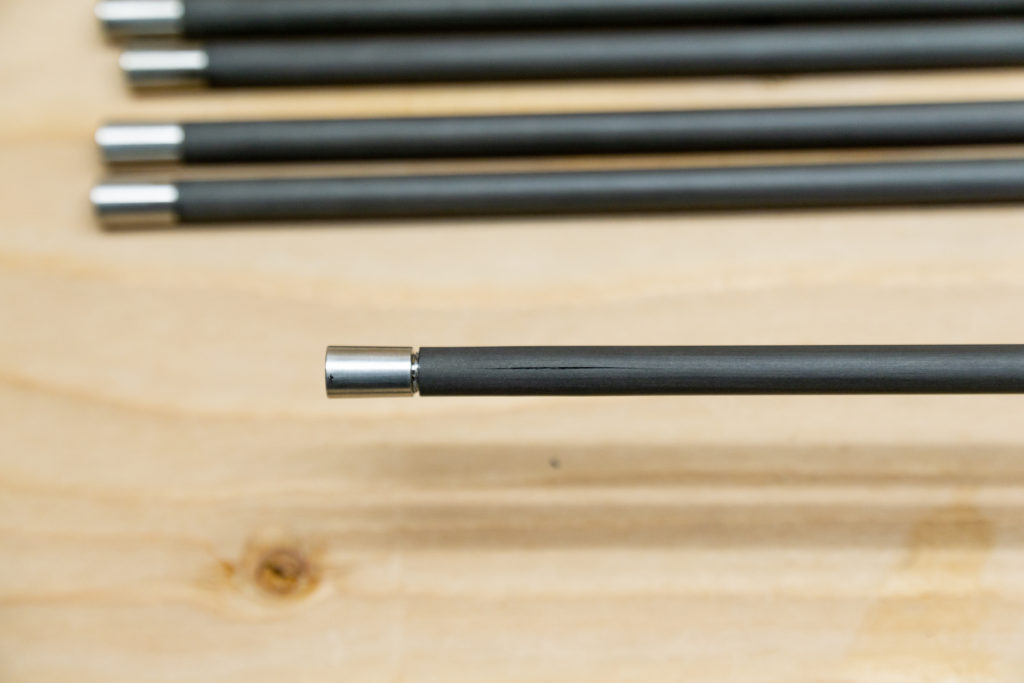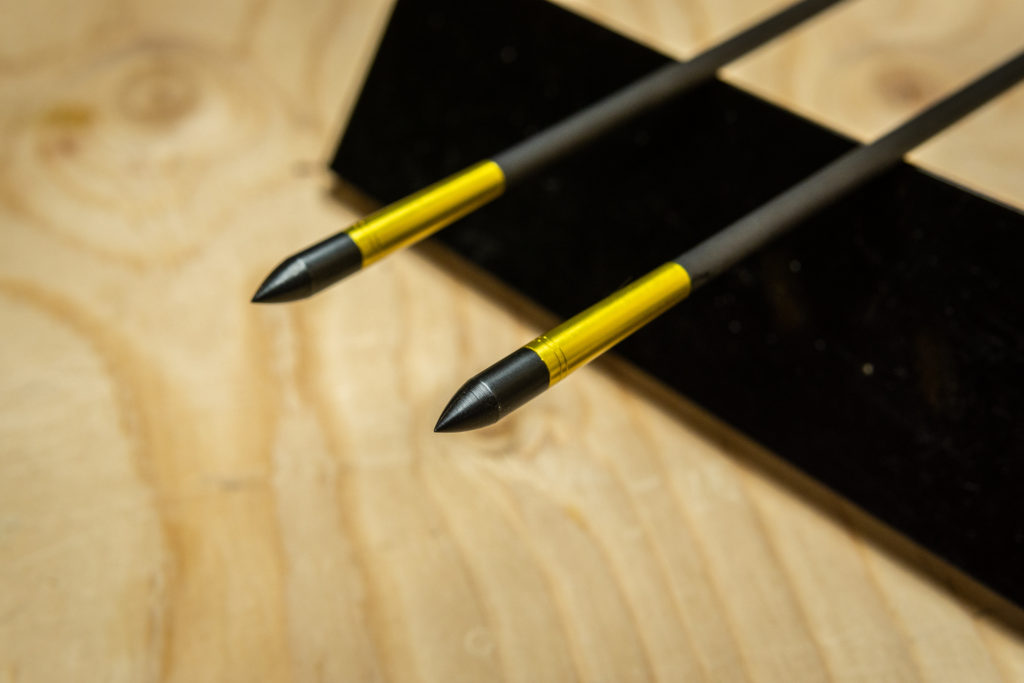Selecting Arrow Components
Arrow Building How-To Part 2
Disclaimer: This blog post contains affiliate links. These links direct you to the product where I may earn a small commission at NO COST to you. This helps keep the content coming!
Okay, so you have chosen your arrow shafts (see Part 1) but you’re not done yet. There are lots of additional components required.
Here’s a quick reference list of all the components you will need:
- Broadheads and Field Points (at this point, weight is our main concern)
- Inserts – There are many options of materials and weights.
- Arrow wraps – This is mainly a decorative piece but has a few welcome advantages.
- Vanes – These stabilize the arrow during flight and help steer that broadhead.
- Nock – There are different sizes, fit, and
lighted options available.
Broadheads & Inserts
I like to consider broadheads and inserts in the same category as both of these items provide the point weight that you are looking to achieve. There is a huge industry push to have heavy FOC (front of center) setups. The benefits to having a higher FOC is that it increases the penetration (although total arrow weight has an effect as well) and performs quite well in a crosswind as the points momentum “pulls” the arrow.
I generally don’t get too hung up on FOC as I like to keep my total arrow weight around the 480-530 grain mark so that I maintain 260-280 feet per second. This little window allows me to still dial my sight and shoot distances of 100 yards in practice and makes tuning fixed blade heads a bit easier.
Two resources when trying to decide on FOC and its importance to you are Aron Snyder and John Dudley’s podcasts (KifaruCast Episode 93 and Nock On Episode 180) and RokSlide’s article on sensible FOC, HERE.
Due to availability, I tend to run either 100gr or 125gr broadheads and then select my insert system according to weight needed to achieve my goals.
Inserts come in a few different materials: aluminum, brass, stainless steel and titanium. There are also different style inserts depending on your shaft selection.
Standard diameter shafts use inserts that sit inside the shaft and sit flush to the end of the arrow shaft. The .204
Standard flush inserts are usually offered in either aluminium or brass, with aluminium being the standard option and weighing around 14-16 grains and brass being the heavier option ranging from 50-100 grains.

Half-Outs can be offered in aluminum (which I do not recommend as they can bend with hard impacts and cause irregular arrow flight), stainless steel, and titanium. The stainless options are most common, although most options available do not use a super high-grade steel due to the cost so some bending after multiple hard impacts can occur. Titanium half-outs are the most expensive options and there are not many available, with Black Eagle being the only one I am familiar with.

Due to the potential for bending of the half outs, many users of the .204”ID arrows use the brass Easton HIIT inserts as they sit within the arrow shaft itself and are less susceptible to the failures. I am planning on ordering some HIIT inserts to experiment with as I have some .204 Ventilator shafts that I have removed the poor quality outserts from.
The issues with the half-outs and the restricted broadhead choices for the deep-6 inserts make the .165
Gold Tip offers a different system for their small diameter arrows that couples a half-out type insert with a Ballistic Collar to protect the front of the shaft. This are a fairly new system to me. I was able to check these out recently and the insert and collar are both aluminum. The insert has a portion that sits outside the shaft allowing for standard broadheads to be used, but it has a longer shaft that acts as a strengthening pin in the front end of the shaft. The FACT weight system by Gold Tip allows small weights (10gr or 20gr) to be threaded into the back of the insert that fits inside the .166′ shafts.



This system doubles up the strength of the two aluminum pieces and should provide more support than a traditional outsert. The collar itself does not need to get glued onto the shaft, this allows you to micro tune the collar and broadhead combination to spin true. Having the ability to make small adjustments depending on which broadhead you use is nice.
Once you’ve got the front of the arrow worked out its time to work on the steering end.
Arrow Wraps
Arrow wraps are not only aesthetically pleasing but they can also add a few grains (~1 grain per inch of wrap) to your total arrow weight and can make re-fletching your arrows easier. I use a white wrap as they are very visible in the field and can show blood on the arrow after a hit quite well. These are a very simple addition they come pre cut in 4 or 7 inch lengths and they are self-adhesive vinyl. You just roll the wraps around the shaft.
Vanes
There are different sizes, lengths, and shapes of vanes on the market. I have personally tested Blazers, AAE Max Hunters, and AAE Max Stealth vanes. After shooting for groups and checking for
Vanes are another area where there are a TON of options. Most arrows that come pre-fletched from the manufacturer will have Blazer vanes. These are a simple 2” tall vane that is fairly short and compact and the industry standard is a straight vane with a 2 degree right offset (meaning the vane is mounted such that the tip of the vane is slightly angled to the right when looking back to front). This offset is done to encourage the arrow to spin quicker which helps to stabilize the arrow in flight.
Arrow Nocks
Nocks are another item that come with your arrows. Different manufacturers use different style of nocks. Its important to check nock fit on your string prior to using a particular nock style. Too tight of a nock can cause vibration and noise when shooting and a loose nock can cause an inconsistent launch of your arrow which a broadhead will only exaggerate. G and F size nocks will fit the .166″ shafts, X and A size nocks will fit the .204″ shafts, H and H.E nocks will fit .234″ shafts (uncommon), S nocks will fit .244″ shafts, and the GT size fits the standard .246″ shafts.
You also have the option to use a lighted nock, there a few manufacturers but we have only used the Nockturnal nocks. These nocks will illuminate once the arrow has been shot and usually will last about 20 hours of continuous light, this can help track an animal or make finding your area in low light scenarios a bit easier. These nocks can be turned off after each shot or use so they are not a one time use item! They are however a little pricey at around $30 per pack of three.
Keep in mind that a standard nock weighs about 9 grains, whereas the lighted options weigh 20+grains. I have used Nockturnal nocks in the past but have found the .204” X size nocks do not fit my stock HOYT string well, so I have just been shooting standard size A nocks.
There are also options to shoot nock collars, these are a smaller aluminum piece that will slide over the nock end of your shaft. They help provide some impact protection but they also add weight to the back of the arrow which can stiffen the spine but will decrease your FOC if that’s important to you.
There are also pin bushings with a pin nock that many target archers use. The extra cost and lack of availability
I will do a separate post relating to broadhead choices as that is another wormhole!
If you have any questions on components or the options available feel free to reach out – R



